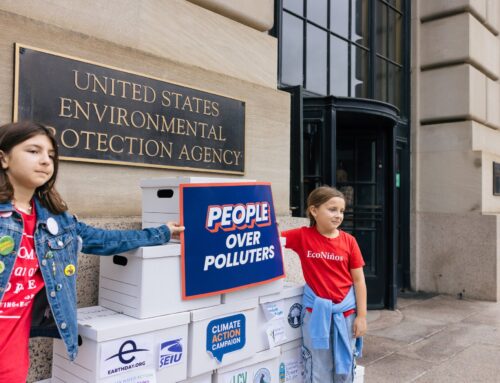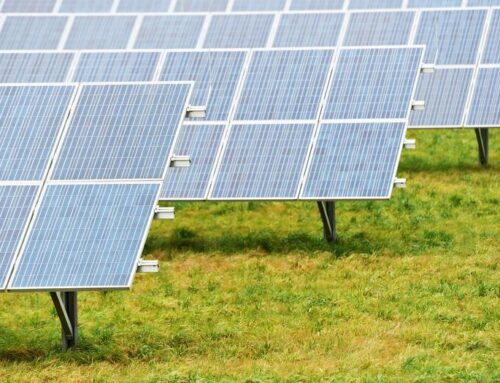ST Explains: Why are renewables not easy to talk about at UN climate summits?
November 2, 2025
SINGAPORE – When the 2035 climate targets of countries are scrutinised at the upcoming United Nations climate change conference COP30 in Brazil, the spotlight will be on whether the nations have done enough to meet a collective goal to ramp up clean energy adoption.
A UN report released on Oct 28, which analysed the targets submitted by 64 countries, including Singapore, found that the plans fall below what is needed to limit global warming to 1.5 deg C above pre-industrial levels.
The Straits Times speaks to experts and the Singapore authorities to chart how renewable energy is framed in the international fora, and the challenges in accelerating its use.
How are renewables discussed at the UN climate change conferences?
The 2023 conference, COP28 in Dubai, was the first time in nearly 30 years that “fossil fuels” made it to a COP deal, when parties agreed to transition away from the planet-warming fuels by 2050, while scaling up renewables.
Countries also agreed to triple global renewable energy capacity by 2030, from 2022 levels.
“The decision for COP28 was the first time a COP decision included a quantitative goal for renewable energy,” said Dr Ali Izadi-Najafabadi, head of Asia-Pacific at energy research provider BloombergNEF.
These key goals were outlined in the first “health check” on the planet’s state of climate action, the Global Stocktake, on what needed to be done to meet the Paris Agreement’s goal.
The agreement, adopted in 2015, aims to limit global warming to 1.5 deg C above pre-industrial levels.
In 2024, new renewable installations hit a record high globally, with more than 580GW added, slightly more than India’s power capacity currently. A significant amount of the boost came from China, which contributed to 88 per cent of roughly 420GW added by Asia.
“One of the reasons governments were willing to include this target was that it applies at the global level, without obligating every party to triple renewables domestically,” Dr Izadi-Najafabadi pointed out.
How are countries progressing on the goal to triple renewables?
Countries’ climate ambitions for 2035 – officially due for submission in early 2025 – have been scrutinised and held up against the outcomes decided on in the first global stock take.
On Oct 27, the International Renewable Energy Agency (Irena) released a report on countries’ progress in meeting the target on tripling renewables.
Looking into 60 countries’ 2035 targets, the inter-governmental body found they could collectively increase total renewable energy capacity to approximately 5.8 terrawatts (TW) by 2030, from 4.4TW today.
Renewables should account for at least 11TW by 2030 under the trebling target.
“Worryingly, since COP28 and the adoption of the tripling renewable power goal, national plans and targets for renewable power generation capacity have increased by just 2 per cent as at July 2025,” said Irena in the report.
“With less than five years remaining for implementation, urgent and effective action on the ground, accompanied by increased investments in renewable energy, is crucial,” it said.
Why could the topic of renewables be contentious at the UN climate negotiations?
Renewables like solar and wind energy come from sources that cannot be depleted, and their plants do not cause pollution and health issues like coal-fired power plants do.
But an expansion of renewables can be deemed a threat to oil and fossil-reliant countries, leading to their resistance in international negotiations.
Dr Izadi-Najafabadi said that as renewable energy, energy storage and electric vehicles have become economically competitive, they are starting to have a material impact on fossil fuel demand.
For example, road fuel petrol demand in China has already peaked, and during the first nine months of 2025, coal power generation in the country recorded a decline, he noted.
“The spectre of a global peak in fossil fuel demand – particularly for coal and oil – poses a significant challenge to fossil fuel exporting nations, as well as companies whose current business models are reliant on the production, trade and consumption of fossil fuels.”
“These companies and countries have often lobbied for measures to slow down the energy transition,” he said.
At COP29 in Azerbaijan, calls to transition away from fossil fuels were not included in the final text.
National University of Singapore’s Energy Studies Institute senior research fellow Kim Jeong Won noted that many developing countries argue that phasing out the fossil fuels they rely on and scaling up renewables without substantial financial assistance and investment from other countries would damage their economies.
This is linked to another contentious issue of who pays for climate finance to help countries decarbonise, build greener power plants and improve interconnections.
At COP29, developed countries agreed to channel US$300 billion (S$389 billion) a year to developing countries by 2035. The ultimate aim is to raise US$1.3 trillion annually by then, through various forms of finance.
The US$300 billion base amount was criticised as woefully insufficient by climate-vulnerable countries, which expected richer nations – which were historical emitters – to commit more.
According to the Oct 28 UN report, 75 per cent of countries included information on climate finance in their nationally determined contributions (NDCs). But it was most often in terms of support needed for fulfilling their climate targets, with fewer mentioning their role as finance providers.
What is Singapore doing to ramp up renewables?
With around 95 per cent of the Republic’s electricity coming from natural gas – a fossil fuel – Singapore has been looking at sources like solar energy, geothermal and bioenergy to green its power sector.
Solar power remains the country’s most viable renewable energy option, but its proportion in the energy mix will remain limited. This is because of land constraints for building solar farms and cloud cover.
By 2030 or earlier, Singapore’s solar energy capacity could be equivalent to roughly 400MW of conventional power, said a spokesperson from the Ministry of Trade and Industry (MTI). That is just around 3 per cent of the country’s electricity capacity at the start of 2025.
By 2050, solar is estimated to supply at most 10 per cent of the Republic’s projected electricity demand, added the MTI spokesperson.
“We will continue to maximise every ray of sunshine we receive,” said MTI.
The authorities are streamlining regulatory processes to urge all businesses and home owners to install solar panels within their premises and are exploring innovative ways to harness sunlight, such as solar canopy structures.
Solar canopies are outdoor, roof-like structures designed to hold overhanging solar panels.
In 2024, it was reported that the authorities were exploring such canopies at Jurong and Tuas ports, and over carparks, and even roads and drains.
Moving beyond conventional solar panels requires more upfront capital investment in infrastructure, which could increase the cost of solar deployment, said the MTI spokesperson.
Being alternative energy-disadvantaged, Singapore needs the help of its neighbours, and will import renewables from them.
To date, the Republic has granted conditional approval and licences to import greener electricity from Malaysia, Indonesia, Cambodia, Vietnam and Australia. These projects cover solar, wind and hydropower, with a combined capacity of around 8GW.
Singapore aims to import around 6GW of electricity by 2035 – about a third of its energy needs then.
What is being done to realise the Asean Power Grid?
Singapore’s commitment to import cleaner electricity from its neighbours lays the groundwork for the Asean Power Grid – the 2045 vision for cross-border green electricity trade among countries in the region.
In mid-October, Asean energy ministers endorsed the enhanced Asean Power Grid memorandum of understanding.
While the political backing is crucial, realising the mammoth vision will come with challenges.
The cost of capital in South-east Asia is roughly twice that in advanced economies, largely due to perceived political and regulatory risks, said Ms Tan Sue-Ern, head of the International Energy Agency’s regional cooperation centre in Singapore.
“Clear and consistent policy and regulatory frameworks are essential for investor confidence and lower financing costs,” she added.
Climate and energy policy analyst Thomas Houlie said Indonesia is lagging despite its vast renewable potential.
“Its latest power grid plan delayed a lot of the renewable deployment until after 2030 and includes near-term increases in fossil-fuel generation,” said Mr Houlie, who is from non-profit Climate Analytics.
MTI’s spokesperson said technical standards need to be aligned in the region, so that power can flow reliably and cost-effectively.
The Laos-Thailand-Malaysia-Singapore (LTMS) electricity import deal, which was launched in 2022 and has served as a pilot for the regional grid, has encountered obstacles.
In mid-2024, Reuters reported that an extension of the deal was fraught with disagreements over how the energy will be transmitted through Thailand and Malaysia, and the amount of power to be purchased.
On Oct 28, the news outlet reported that Thailand has yet to approve transmission charges for the deal’s extension to send hydropower from Laos to Singapore.
MTI said: “The LTMS Power Integration Project has also demonstrated the need for close coordination among the four countries’ authorities on the technical, commercial, legal and regulatory fronts, to ensure the effective implementation of the initiative.”
Source: The Straits Times © SPH Media Limited. Permission required for reproduction
Discover how to enjoy other premium articles here
Search
RECENT PRESS RELEASES
Related Post




